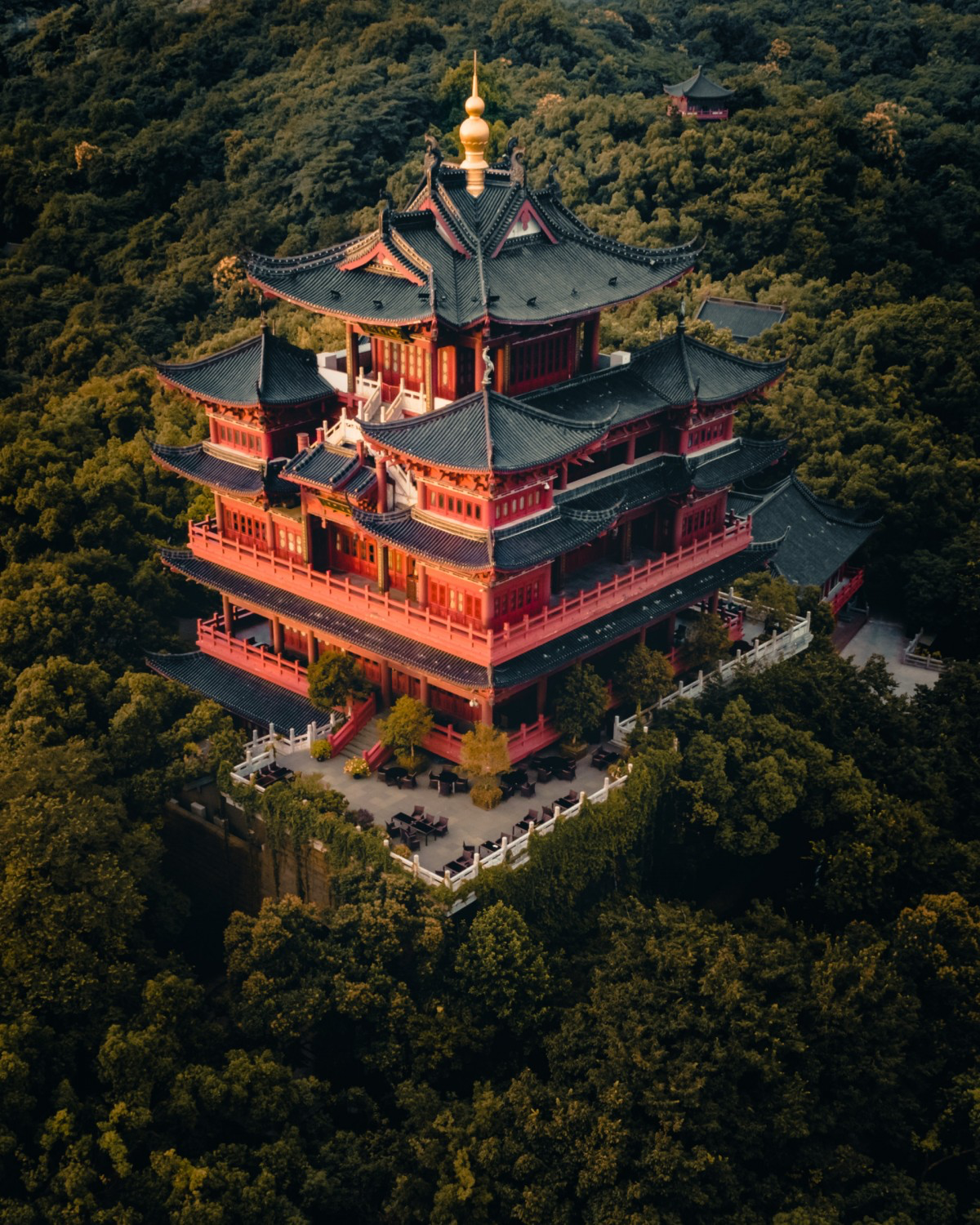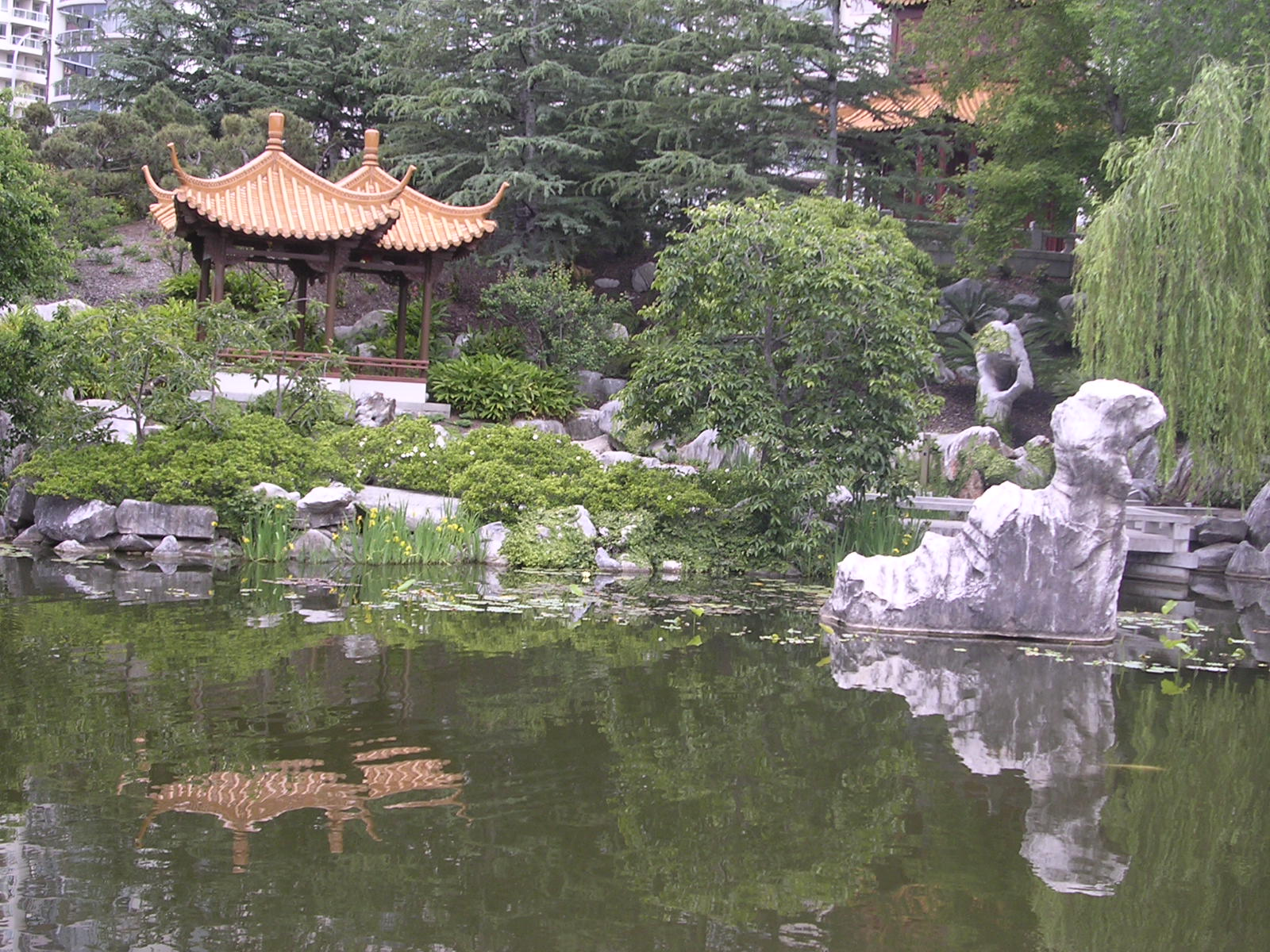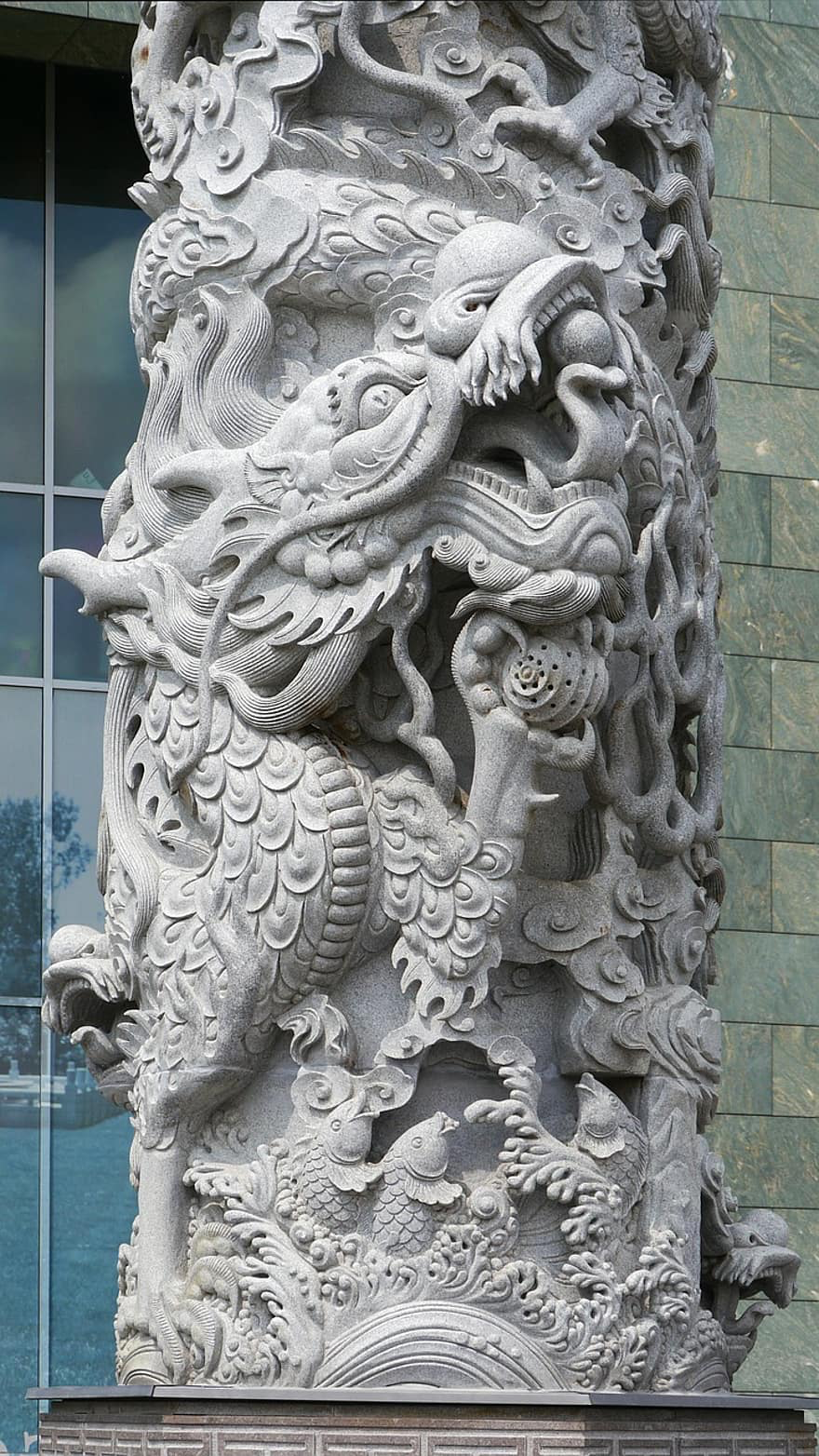Emily Guo
user_sophia9212
AP Chinese 🇨🇳
53 resourcesSee Units
Introduction to Chinese Poetry and Architecture
This AP Chinese guide will introduce you to Chinese poetry, songs, architecture, and museums! China has a long and rich history, and there are so many fascinating things to learn about the country's culture and traditions. In this guide, we'll be exploring some of the most interesting and beautiful aspects of China's artistic and architectural heritage.
Chinese Art and History
China's vast history and culture can be deeply expressed through its arts.
各种各样的艺术品都可以记录历史。中国的艺术品也不是意外。其实,对于中国的历史,艺术品记录下的场景非常重要。许许多多的重要人物和事件将出现在艺术品中。
History can be recorded by all kinds of art. Chinese art is no different. In fact, for the history of China, the scenes recorded by artworks are very important. Many important people and events will appear in the artworks.
Chinese Poetry and Songs
Chinese poetry dates back to the Shang Dynasty (1600-1046 BC) and has a rich tradition that has influenced literature and art around the world. Chinese songs have a similarly long history and have played a central role in the country's cultural life.
Throughout history, poems and songs have been an important part of Chinese culture, as well as expressing the history of the times through the meaning behind the poems. Some were used for love, while others were used for ceremonies.

Image Courtesy of Wikimedia Commons
The first book written in China containing poems is called the Book of Songs/Classic of Poetry (诗经(shījīng)). It includes poems written from the 11th century BCE and the 7th century BCE. The first section contains folk songs relating to the stories of common people. The second section contains hymns related to rituals and praising the Zhou dynasty's founders, as well as the feelings of the common people at the time.
Poetry in China had its Golden Age during the Tang dynasty (618 CE-907 CE). Poetry was required for the civil service exam, known specifically as the Imperial examination system (科举制度(kējǔ zhìdù)), which were used to choose individual candidates for the bureaucracy.
.jpg)
Image Courtesy of Wikimedia Commons
A collection of the most popular poems during the Tang dynasty is called the Three Hundred Tang Poems (唐诗三百首(tángshī sānbǎi shǒu)), as seen above. Commonly seen in modern-day textbooks in China, many of the poems are required to be memorized. Three Hundred Tang Poems have poems about politics, friendship, common life, etc., much like their earlier counterparts.
During the Song dynasty (960 CE-1279 CE), many poems created were based on previous rhythms and tunes, known as Cí(词(cí)). With a total of 800 rhythm forms, Cí poems are associated with which rhythm is used. Since military and politics were a common topic throughout life during the dynasty, many poems written during this time reflected that by containing topics pertaining to politics. Other poems, written by those who were unable to be a part of the bureaucracy, reflected thoughts of dissatisfaction with the government.
Related Vocabulary
- 诗经(shījīng) - Book of Songs/Classic of Poetry
- 科举制度(kējǔ zhìdù)- Imperial examination system
- 唐诗三百首(tángshī sānbǎi shǒu)- Three Hundred Tang Poems
Chinese Architecture
Chinese architecture, with its distinctive style and use of materials, has been recognized as a unique form of art for centuries. In fact, Chinese architecture (中国建筑)zhōngguó jiànzhú)) has had many influences on other countries in South Asia. Famous Chinese museums, such as the Palace Museum in Beijing and the Shanghai Museum, showcase the country's rich cultural heritage and provide a glimpse into its past.

Image from PxHere
建筑 (jiànzhú)
The basis of Chinese architecture relies much on a multitude of ideas within **风水 (fēngshuǐ)**.
Feng shui is a way of designing and arranging buildings and other structures in a way that is believed to bring good luck and positive energy to the people living or working inside. It comes from China and is based on the idea that there are invisible lines of energy all around us, and that we can make our spaces feel better by aligning with these energies. In traditional Chinese architecture, people used feng shui to decide where to put doors, windows, and other parts of a building. They thought that good feng shui would bring good luck to the people inside. Today, feng shui continues to be an important aspect of Chinese architecture and is often incorporated into the design of new buildings and the renovation of older ones. It is also practiced by people around the world who are interested in creating a harmonious and positive living or working environment.
When taking a look at the width of a building in China, you can learn a lot about the reason it was built. In comparison to the West, where height ↕️ is stressed, Chinese architecture stresses width. Tall buildings were considered unattractive.
Shown in the image below is the Forbidden City, known as 北京故宫 (běijīng gùgōng) or 紫禁城 (zǐjìnchéng). As you can see, it takes up a lot more horizontal space than vertical. Inside the Forbidden City, the ceilings are also lower in comparison.

Image from Wikimedia Commons
Aside from a horizontal emphasis, there are many other important aspects to Chinese architecture. One of them is symmetry. To be specific, bilateral symmetry! Throughout Chinese architecture, even in simpler buildings, symmetry is present. However, gardens usually are not symmetrical. This is to stimulate a natural flow since the garden is treated like a coexistence for humans and nature. A very distinct part is how water and hill stones are necessary for the gardens. It's a form of Yin Yang (a BIG part of Chinese culture)!
Whenever designing new architecture, research on the neighboring territory was ESSENTIAL for harmony

Image from Wikimedia Commons
Carvings and color paintings decorate Chinese architecture from the past. The carvings display not only stories on the walls, but also wildlife. Colored paintings are made with the brightest colors and the specific colors used can show the ranking of the home. Much of the paint used had copper within it so that it could last longer.

Image from Pikist
Much of China's history lies waiting through its ancient bamboo books, buildings and architecture, visual arts, and many more. Some describe the simple everyday life that its artist is privy to, while some pack in stories and legends that drastically changed history. The build-up of centuries of culture is also visible through the repeated structures in the artworks regardless of the time.
Related Vocabulary
- 自然(zìrán)- Natural
- 中国建筑(zhōngguó jiànzhú)- Chinese Architecture
- 彩色画(cǎisè huà)- Colored Painting
- 雕刻品(diāokè pǐn)- Carving
- 中国古典园林(zhōngguó gǔdiǎn yuánlín)- Chinese Classical Garden
- 花园(huāyuán)- Garden
- 和睦(hémù)- Harmony (between individuals)
- 和谐(héxié)- Harmony (between elements)
- 融洽(róngqià)- Harmony (between individuals or elements)
- 和谐共存(héxié gòngcún)- Harmonious Co-existence
- 美丽(měilì)- Beautiful
Famous Museums in China
China's museums contain mostly information about ancient China and are very valued throughout the country. Some museums are preserved buildings that are ancient, while others are complete with many artifacts of history.
The Forbidden City (紫禁城(zǐjìnchéng)) - 15th Century CE
Built during the 15th century, the Forbidden City is the largest palace in the world, located in Beijing. It was made to house emperors and to be the center of the government. It was announced as a World Heritage site (1987) and is considered to be the largest collection of preserved ancient wooden structures in the world by UNESCO. With 980 buildings and 9,999 rooms, it takes up a whopping 72 hectares!
Currently, the Forbidden City serves as the Palace Museum (故宫博物院(gùgōng bówùyuàn)) and receives roughly 14 million visitors annually. The collection of items within the museum include documents and artifacts from the Ming and Qing dynasties. There are about 340,000 parts of ceramics, 50,000 paintings (including those from before the 13th century), 30,000 pieces of jade, 10,000 pieces of bronzeware, 1,000 pieces of timepieces, and lots of artifacts from the imperial court.
The Forbidden City is known to be an influential part of Chinese architecture and many other architectural developments all throughout East Asia.
Terracotta Army Museum (秦始皇兵马俑(qínshǐhuáng bīngmǎyǒng)) - 3rd Century BCE
The Terracotta Army was built during the first emperor of China's reign in the 3rd century BCE. Located in Xi'an, Shaanxi, the Terracotta Army is a group of terracotta sculptures meant to protect Emperor Qin Shi Huang in his journey through the afterlife. There are roughly 8,000 soldiers, 130 chariots, 520 horses, 150 cavalry horses, officials, musicians, and more. It was discovered in 1974, revealing the massive tomb. Each figure is life-sized but ranging in height. They were painted with materials from the time, however, once exposed to oxygen, much of the paint fell off.

Image Courtesy of Wikimedia Commons
The mausoleum is modeled after the capital of the Qin dynasty, Xianyang. Made of an inner and outer city, it takes up a total of 3.9 miles circumference. The actual tomb of the emperor himself remains untouched.
National Museum of China (中国国家博物馆(zhōngguó guójiā bówùguǎn)) - 2003
Known as the third most visited museum in the world (palace museums are excluded), the National Museum of China 🇨🇳 has roughly over 7 million visitors visiting annually. It is located in Beijing on the eastern side of Tiananmen Square. The museum houses artifacts from items estimated to be 1.7 million years old to the end of the last dynasty in China, the Qing Dynasty. One exhibition focuses on China's recent history from the Opium Wars to the present, including details on the evolution of modern-day politics in China.

Image Courtesy of Wikimedia Commons
Related Vocabulary
- 博物馆(bówùguǎn)- Museum
- 紫禁城(zǐjìnchéng)- The Forbidden City
- 故宫博物院(gùgōng bówùyuàn)- Palace Museum
- 秦始皇兵马俑(qínshǐhuáng bīngmǎyǒng)- Terracotta Army Museum
- 中国国家博物馆(zhōngguó guójiā bówùguǎn)- National Museum of China
Browse Study Guides By Unit
👨👩👧Unit 1 – Families in China
🗣Unit 2 – Language & Culture in China
🎨Unit 3 – Beauty & Art in China
🔬Unit 4 – Science & Technology in China
🏠Unit 5 – Quality of Life in China
💴Unit 6 – Challenges in China
📚Study Tools

Fiveable
Resources
© 2025 Fiveable Inc. All rights reserved.